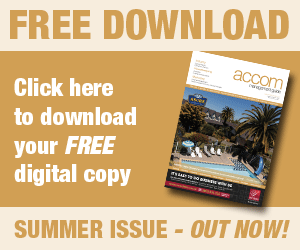Safe Play
- Details
- Published Date
Playgrounds provide hours of fun and entertainment for children of all ages, however, there is always the risk of injury from falls, trips, entrapments and other accidents.
Accommodation providers need to be aware of the importance of well designed and well maintained playgrounds.
All playgrounds, including those found in motels and holiday parks, must comply with the New Zealand Standard for Playground Equipment and Surfacing (NZS 5828.2004) which came into effect in April 2004.
The Standard specifies the general requirements for safe playground equipment and surfacing, including the need for regular safety checks on all equipment and surfacing.
Inspection, maintenance and servicing records should be kept by the owner/operator in charge of the playground, and it is recommended that all equipment is inspected and maintained according to the manufacturer's instructions.
So what inspections need to be carried out to ensure playground equipment remains safe for use?
Routine visual inspections of the playground should be carried out each week. These inspections allow you to identify any obvious hazards, such as loose screws, fraying ropes and splintered wood that could occur as a result of vandalism, wear and tear, or even adverse weather conditions.
If you have a playground that is subject to heavy use or vandalism, a daily inspection would be necessary.
Operations inspections provide a detailed check of the play structure and should be carried out every three months.
The operation and stability of the play structure should be checked, with special attention given to any moving parts.
Finally, an annual or main inspection establishes the overall safety of equipment from the foundations up. This inspection covers the effects of adverse weather, and any change in the level of safety due to wear and tear, or as a result of repairs.
To prevent accidents, the owner or operator of the playground should ensure that an appropriate inspection schedule is established and maintained for each playground.
The schedule should list all components that require inspection and the methods of how to carry this out. If you discover a defect that would put safety at risk, it will need to be corrected without delay.
Standards NZ has produced a guide – SNZ HB 5828.1:2006 General Playground Equipment and Surfacing Handbook – that provides a number of inspection checklists based on a risk management framework, to identify and address potential hazards and playground risk and assist in establishing inspection and maintenance processes.
Those conducting tasks on playgrounds such as inspections, maintenance or repairs should be competent to reduce accidents and risks.
If you want to bring an older playground up to the current safety standard levels, there are a number of qualified auditors in New Zealand that have been trained to the recognised Royal Society for the Prevention of Accidents (ROSPA) Level 3 or equivalent grade of compliance. These inspectors are trained to recognise the types of accidents that can occur in a playground and can assist in identifying problem areas and completing relevant documentation.
Likewise, if you are in the market for a new play structure, it is essential that the structure is certified to the correct level of compliance – NZS 5828:2004 – which stipulates that play structures need to be safe and covers head and limb entrapments, fall and impact types and the fall zones surrounding activities and structures.
Carrying out regular inspections and undertaking maintenance as necessary can help to ensure your playground is safe for years to come.
Michael Cox
Playgound Centre


